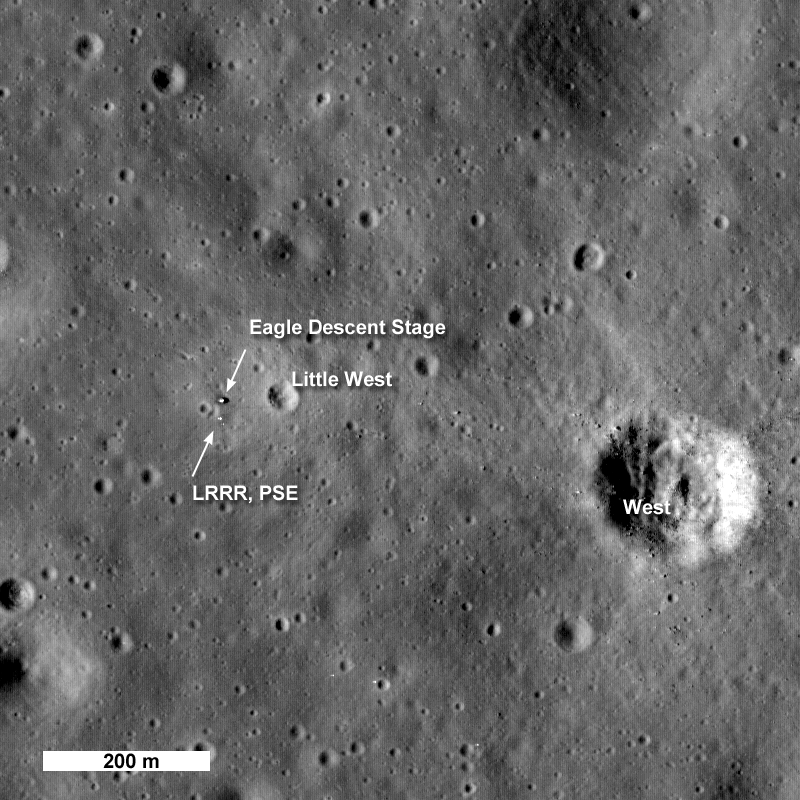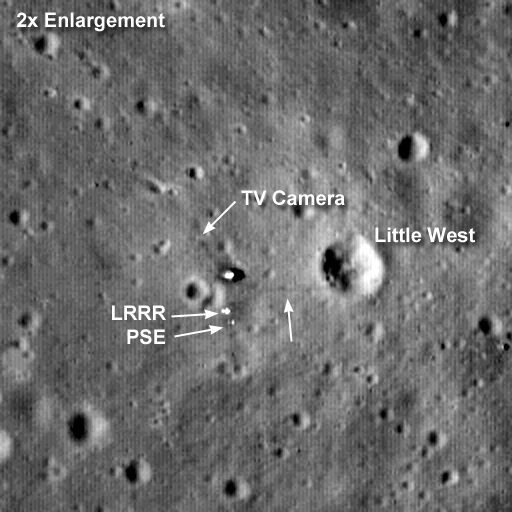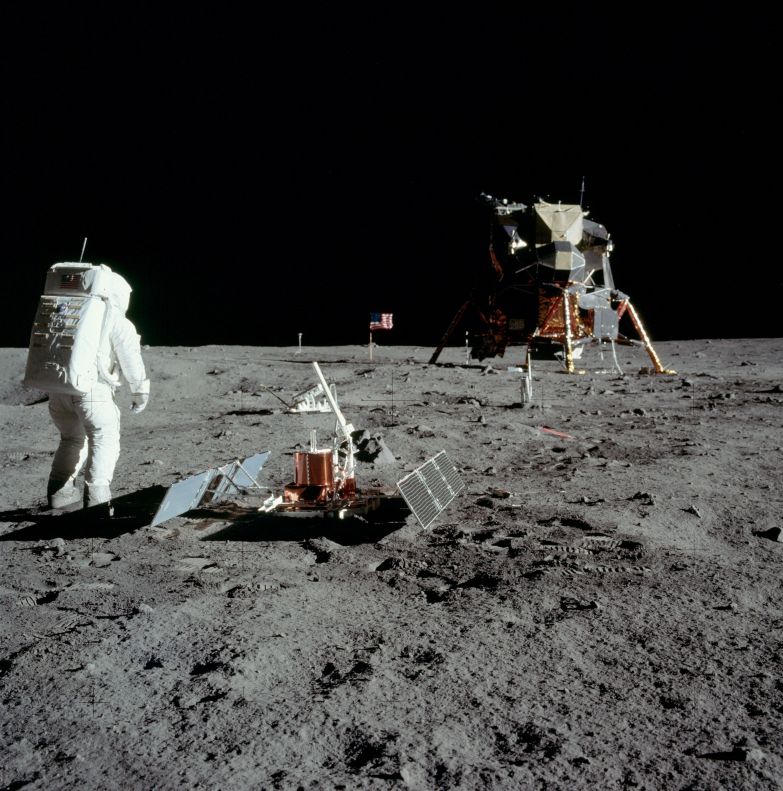
A month after LROC's first image of the Apollo 11 landing site was acquired, LRO passed over again providing LROC a new view of the historic site. This time the Sun was 28 degrees higher in the sky, making for smaller shadows and bringing out subtle brightness differences on the surface. The look and feel of the site has changed dramatically.
The astronaut path to the TV camera is visible, and you may even be able to see the camera stand (arrow). You can identify two parts of the Early Apollo Science Experiments Package (EASEP) - the Lunar Ranging Retro Reflector (LRRR) and the Passive Seismic Experiment (PSE). Neil Armstrong's tracks to Little West crater (33 m diameter) are also discernable (unlabeled arrow). His quick jaunt provided scientists with their first view into a lunar crater.
Explore the full resolution LROC NAC image and find the landing site on your own.
Published by Mark Robinson on 29 September 2009

